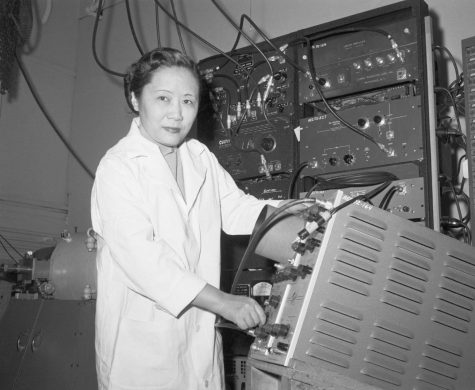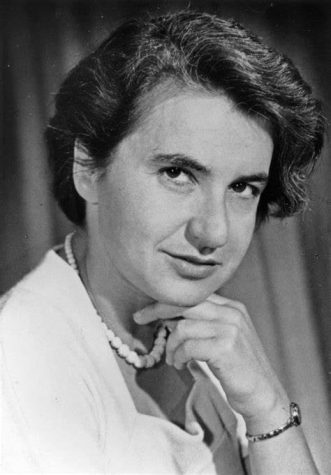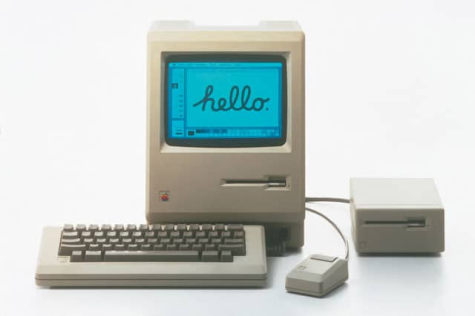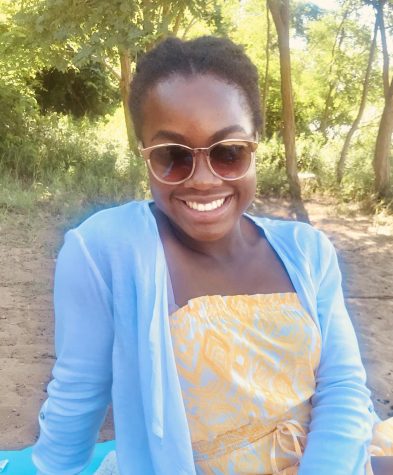A Step Up for Women in STEM
March 22, 2022
Since the ratification of the 19th Amendment in 1920 and the Feminist Movement of the 1960s, it is clear that women have come a long way towards equality throughout the course of history. While many women were barred from attending higher education schools or obtaining degrees, since then women have succeeded in the realm of the professional world.
This holds true for the STEM field. Great women such as Rosalind Franklin who discovered the structure of DNA through X-ray crystallography, or Chien Shiung Wu who worked on the Manhattan Project and made significant contributions to the world of nuclear physics, all have helped women’s dream to become a reality. In 1970, only 7% of STEM fields were made up of women, compared to 28% today.


Mrs. Acosta, science and math teacher at Holy Family, was first reeled into the world of computer science when she was just a freshman in high school.
“My Algebra 2 and Trig teacher procured 4 Apple McIntosh computers and converted his closet into a mini-computer lab. After programming my first program, truly “Hello World” and I was hooked! I didn’t even know what being a computer engineer meant, but that’s what I wanted to get a degree in! My first computer looked exactly like this one!”

Mrs. Acosta graduated from the University of New Mexico with a B.S. in computer engineering, working as an IBM for 11 years, first as a computer scientist and then as a software developer manager.
Similarly, Mrs. Erdmann’s interest piqued in STEM, specifically mathematics, at a very young age.
“I have always loved numbers! When I was a kid, I remember asking my mom for extra addition and subtraction problems while we were watching TV. I honestly just love how there’s one right answer, and lots of different ways to get to that right answer,” Mrs. Erdmann stated.
Mrs. Erdmann went to Rice University and graduated with a degree in Mathematical Economics Analysis.
“Before I started teaching, I worked as a management consultant for two years, and then worked for eight years at a real estate start-up company that built and operated assisted living communities. When I worked in real estate, I put together project summaries that helped us to secure construction debt, and also put together five-year financial projection packages to help us joint venture the projects once they were up and running. Last, I did lots of financial variance reporting and operational statistics reporting to make sure that the businesses were operating smoothly. I always tell people that I’m a math geek who really just loves numbers (not science),” Mrs. Erdmann remarked.
Both women stated that being a woman in their selective fields has not changed their personal experiences.
“Not so much being a woman, but more as just a “human-oid” at how technology has advanced so rapidly and how it has pervaded every aspect of our lives, it is something I find fascinating. We are in this augmented reality where we really can’t do much without our phones, computers, or devices,” Mrs. Acosta said.
” I honestly do not think so. The real estate company I worked for was dominated by women. I got so used to saying “yes, Ma’am”, that I still say it all the time (and sometimes I refer to my male students as ma’am on accident). Also, when I was at Rice, I think almost half the math kids were women. My mom has a Ph.D. in math, and I consider her a true trailblazer, but I feel like it was pretty easy for me,” Mrs. Erdmann stated.
Just in the past decade, it has been remarkable to see the growing evolution of the STEM as more and more women join the field. Through the advance of technology in our modern world, the growing number of jobs in the field have encouraged all people to join.
“Enjoy the numbers and find a good study group,” Mrs. Erdmann replied. “Also, everyone finds math hard at some point in college. The people who succeed are the ones who respond by working harder vs. giving up.”
“Believe in yourself, and you are where you belong!” Mrs. Acosta said. “Be outspoken, and confident in sharing your ideas! Women, people in general, with different backgrounds, experiences, cultures, all bring something unique, innovative and valuable to solutions, thereby making the solution the best it could be. As there are fewer women in STEM, it may make it seem intimidating to start, however, all the women I know in STEM love it!”
As shown by these wonderful teachers and their stories, a career in STEM opens the door to a world of possibilities!

